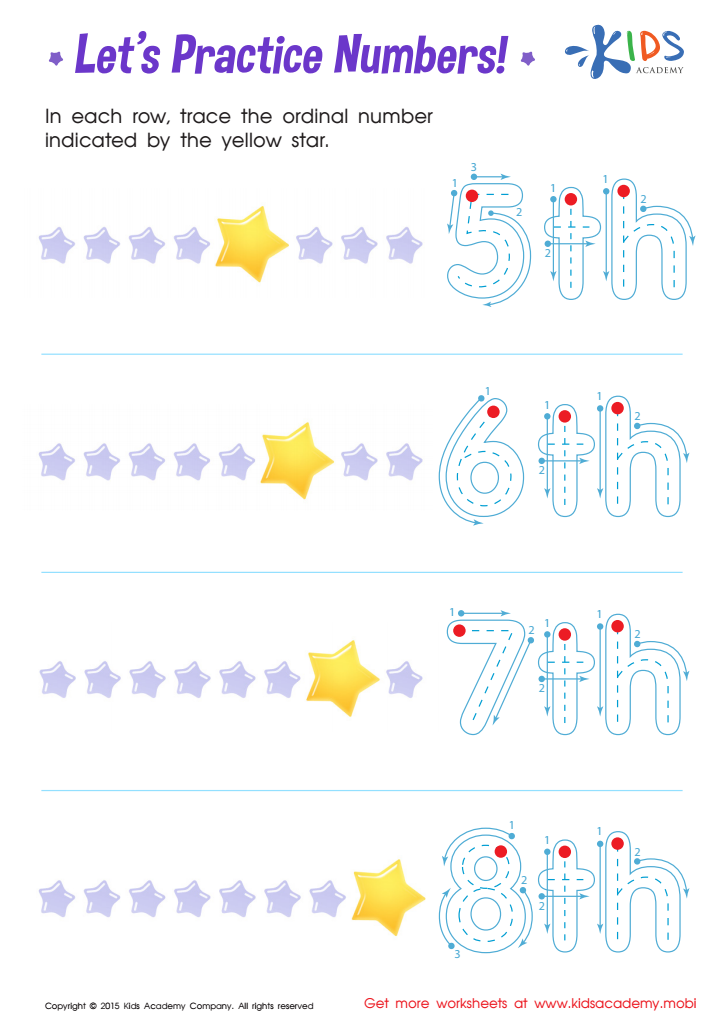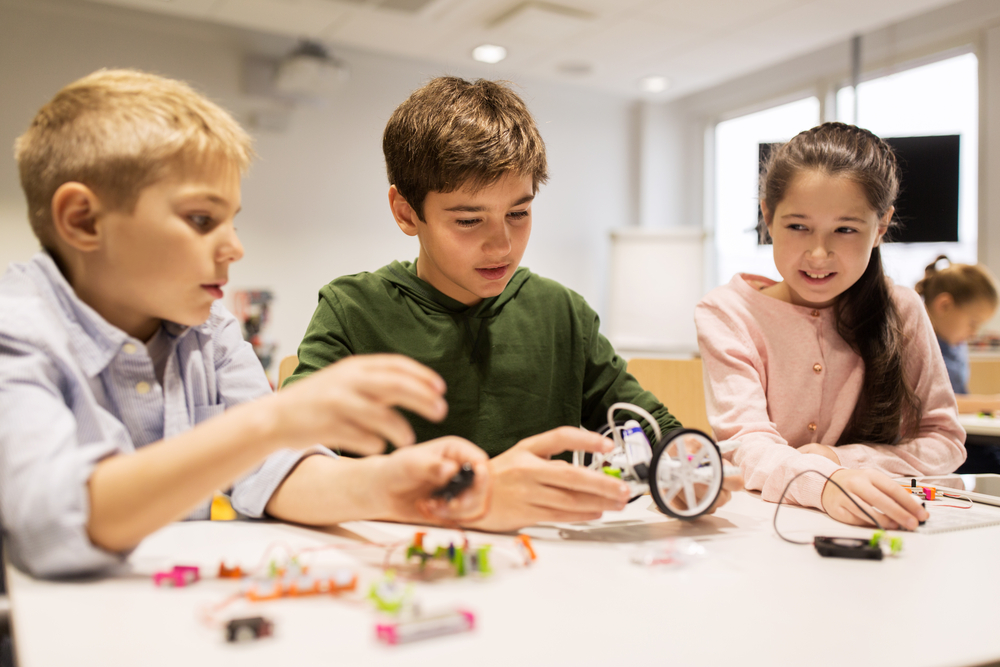Normal Tracing Numbers worksheets activities for Ages 6-8
18 filtered results
-
From - To
Welcome to our engaging Normal Tracing Numbers worksheets, specially designed for children aged 6-8! These fun and interactive activities help young learners master number formation and improve their fine motor skills. Each worksheet features clear number outlines that guide kids through the tracing process, reinforcing their numerical recognition and writing abilities. Suitable for both classroom settings and home practice, these worksheets make learning enjoyable and effective. Enhance your child's confidence in mathematics with our collection of tracing exercises, which promote early numeracy skills while keeping them entertained. Dive into our resources today for a delightful learning experience!
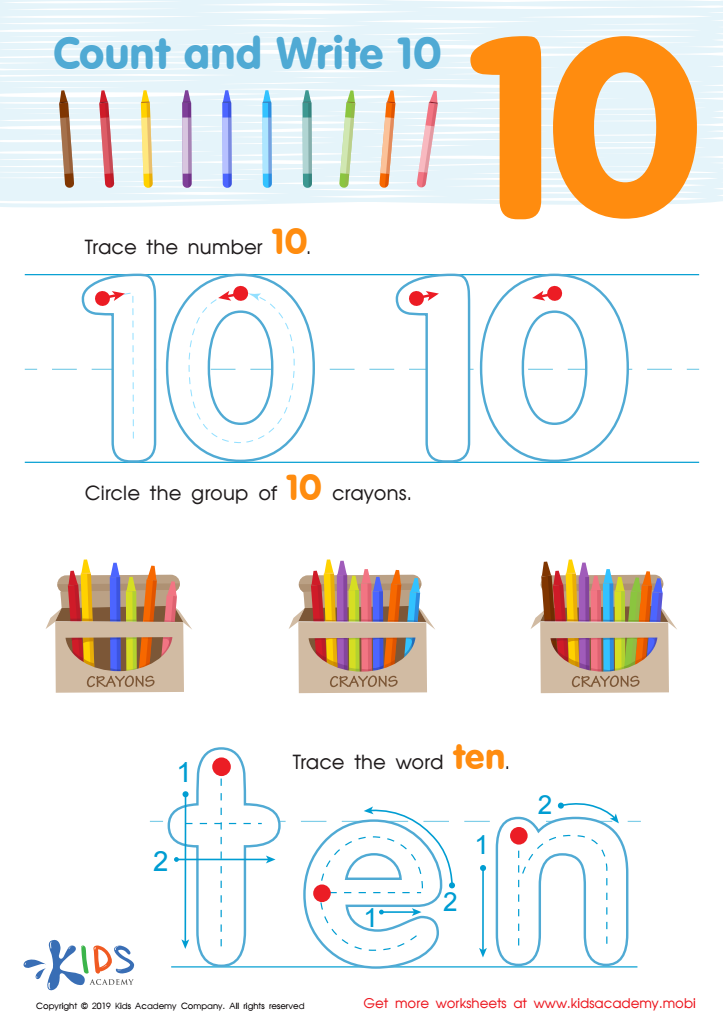

Count and Write 10 Worksheet
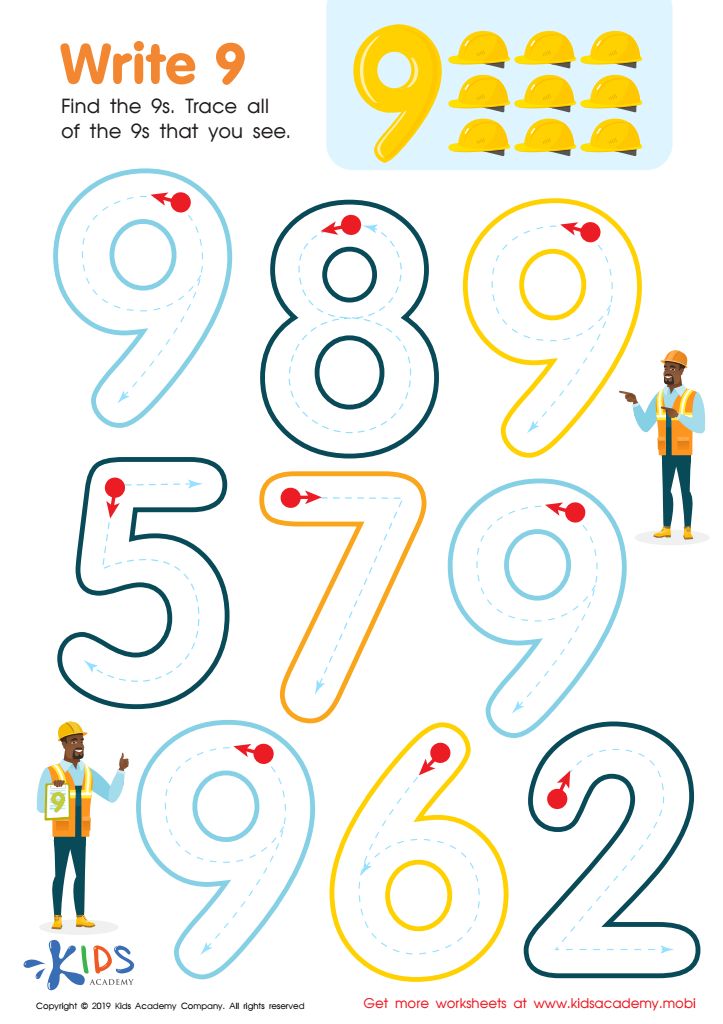

Write 9 Worksheet
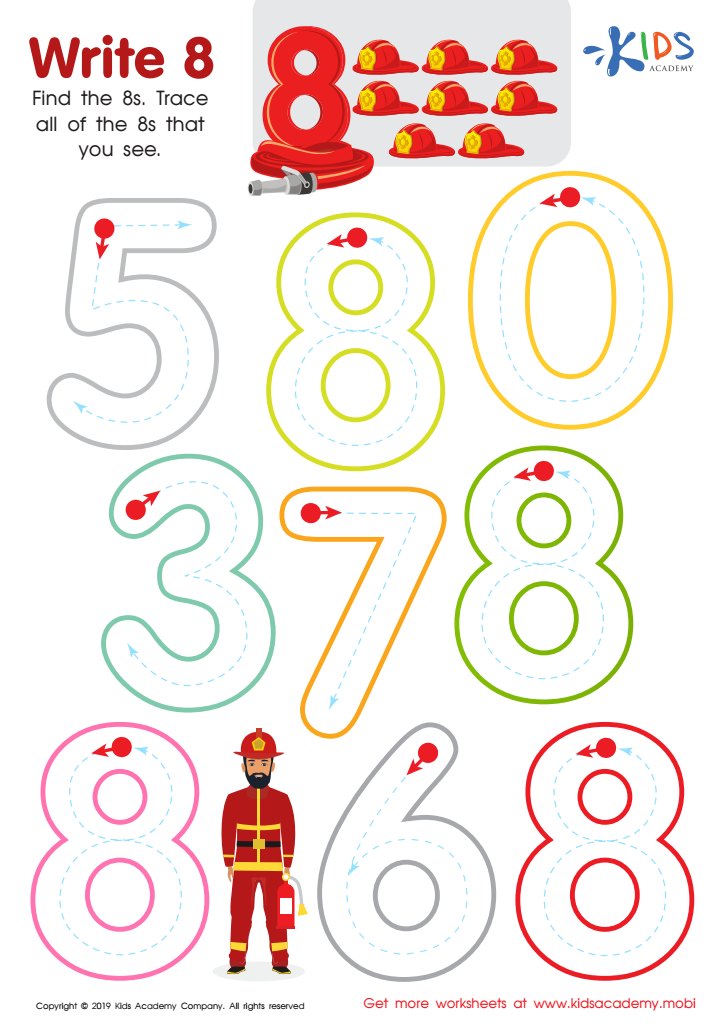

Write 8 Worksheet
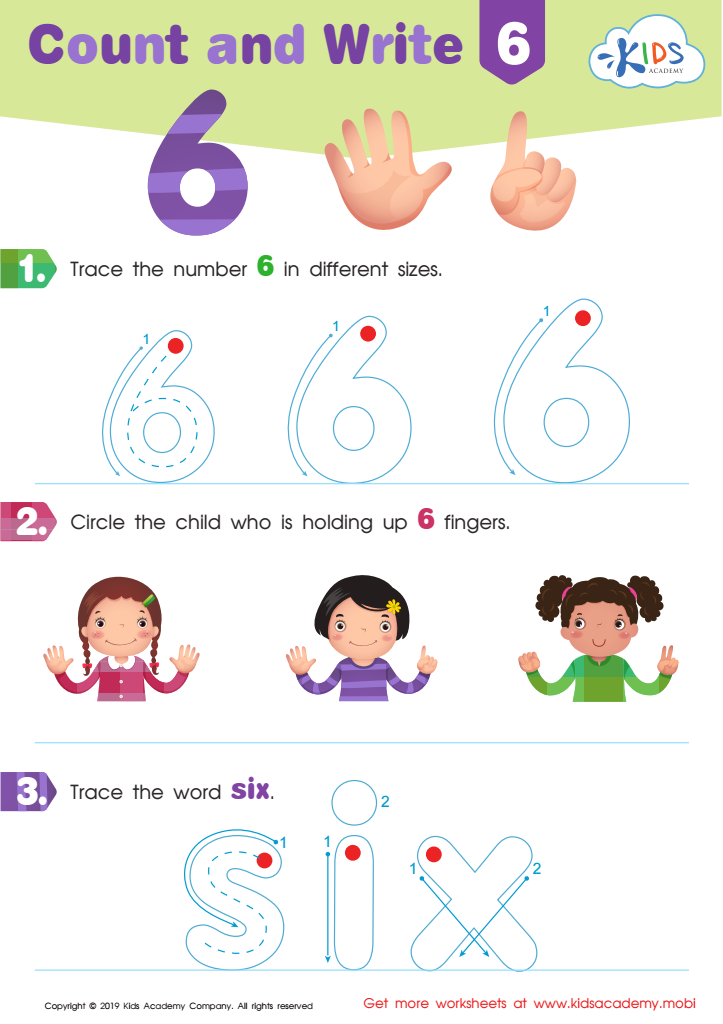

Count and Write 6 Worksheet
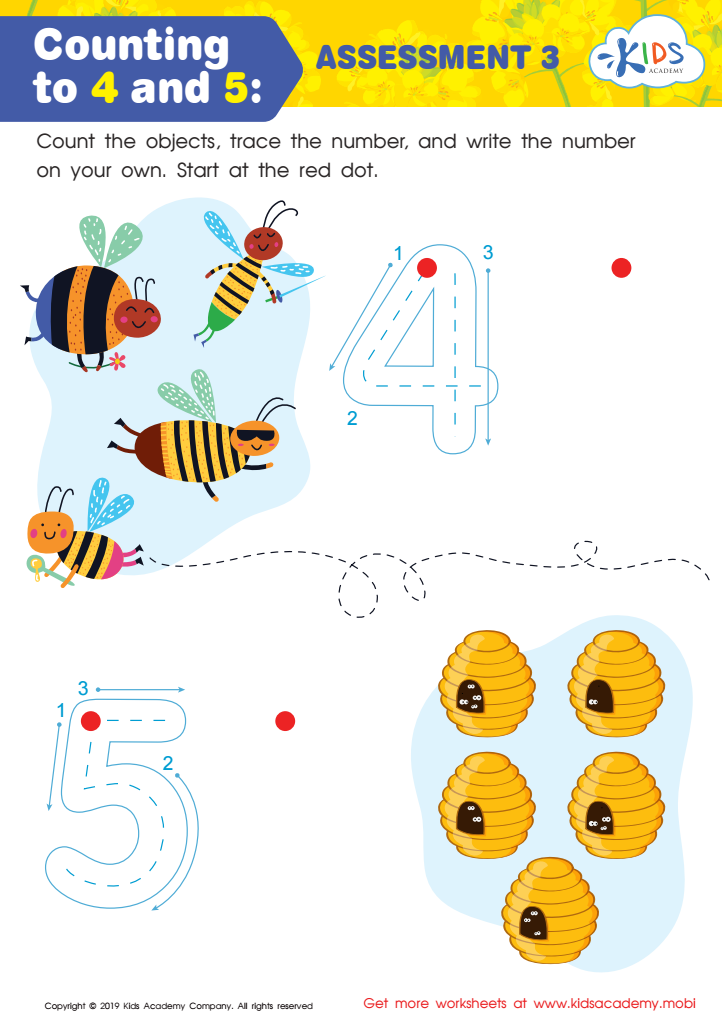

Counting to 4 and 5: Assessment 3 Worksheet
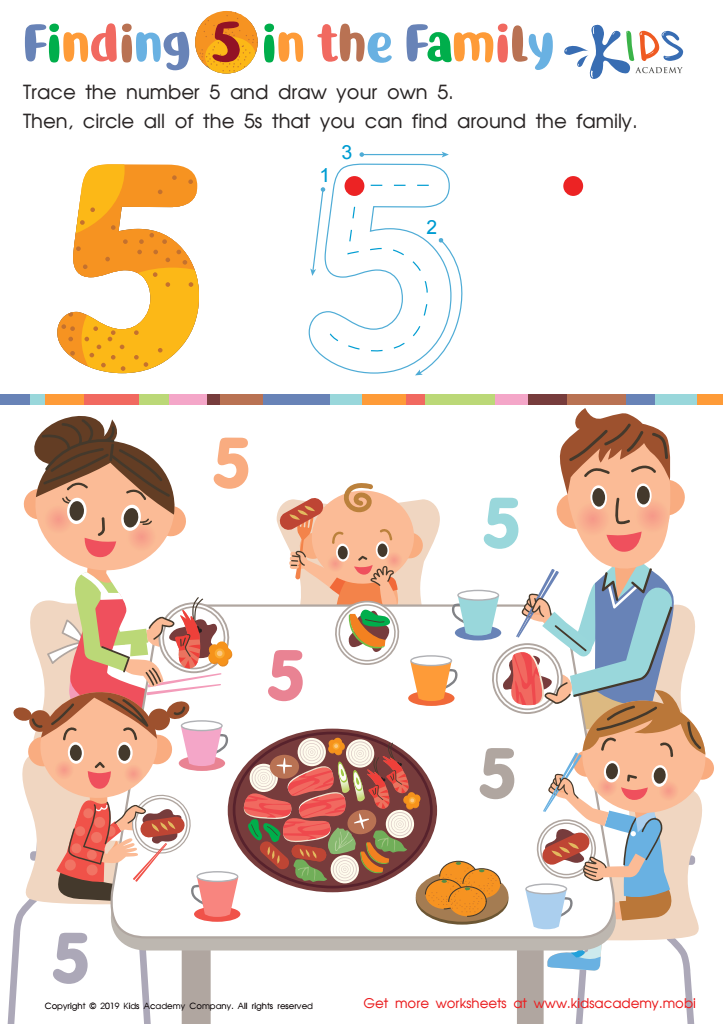

Finding 5 in the Family Worksheet
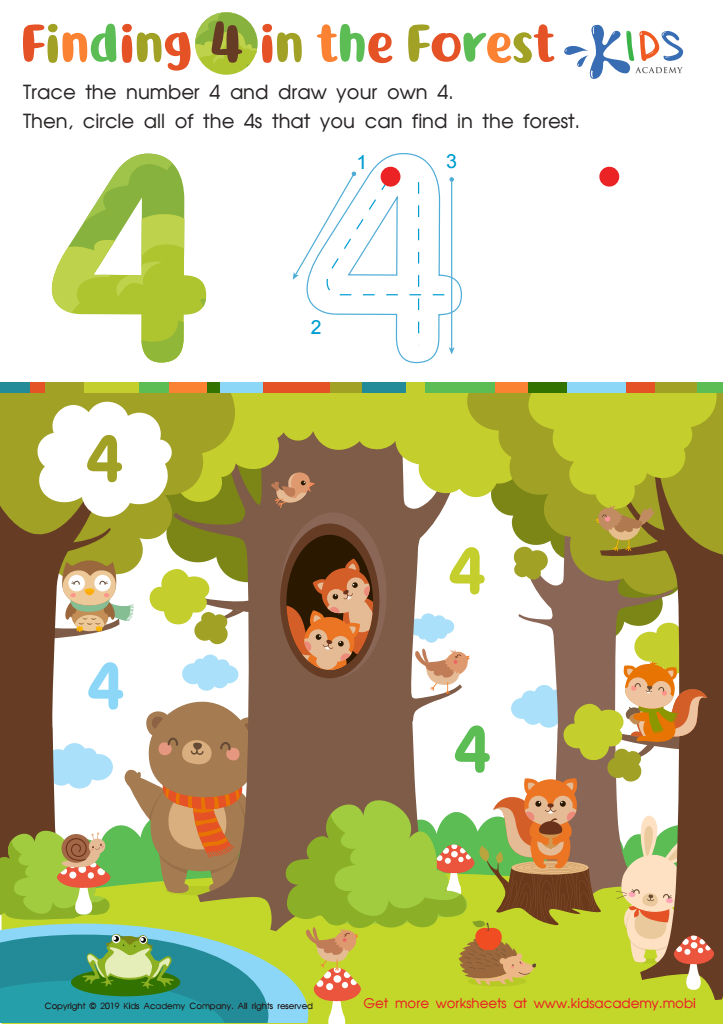

Finding 4 in the Forest Worksheet
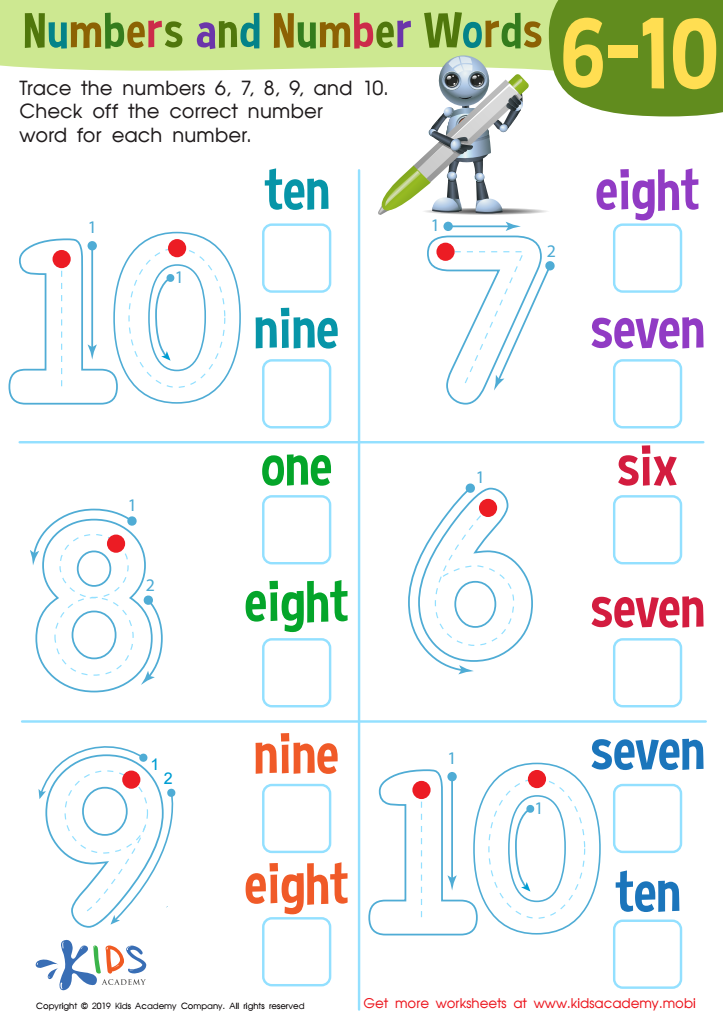

Numbers and Number Words 6–1 Worksheet
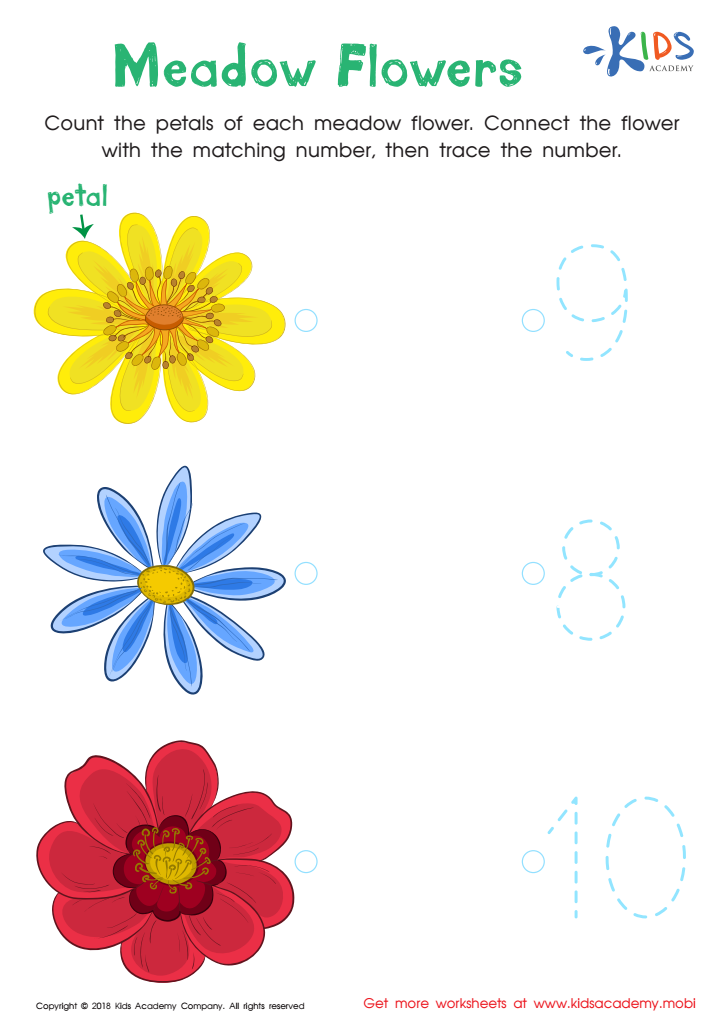

Kindergarten Number Tracing: Medow Flowers Worksheet


Kindergarten Number Tracing: Mary's Bag Worksheet
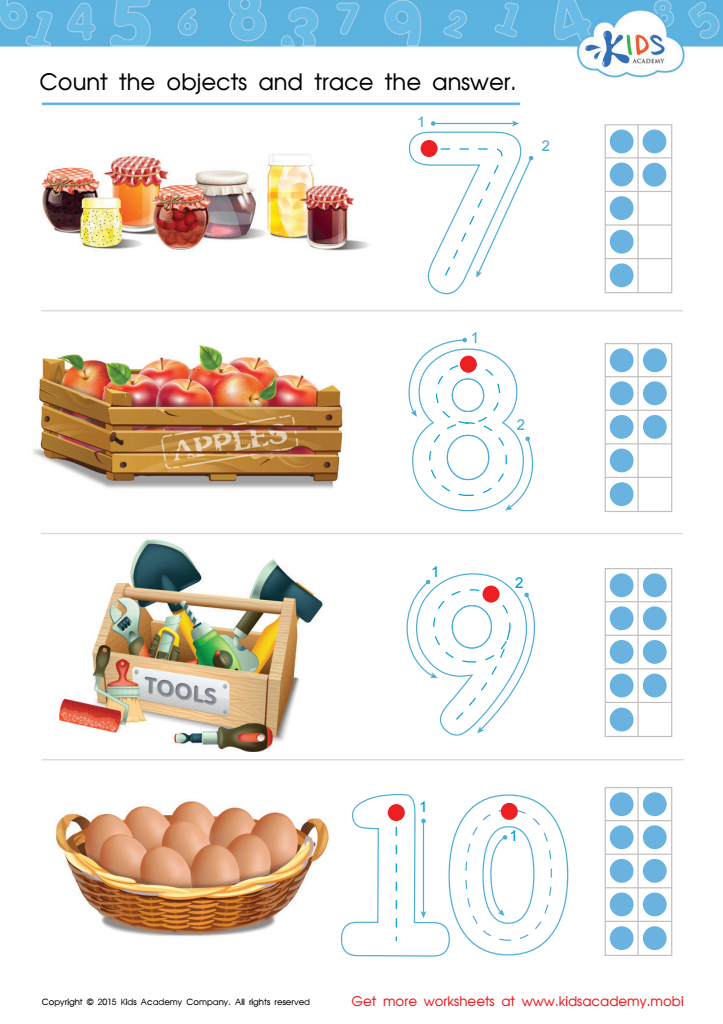

Count and Trace 7 – 10 Worksheet
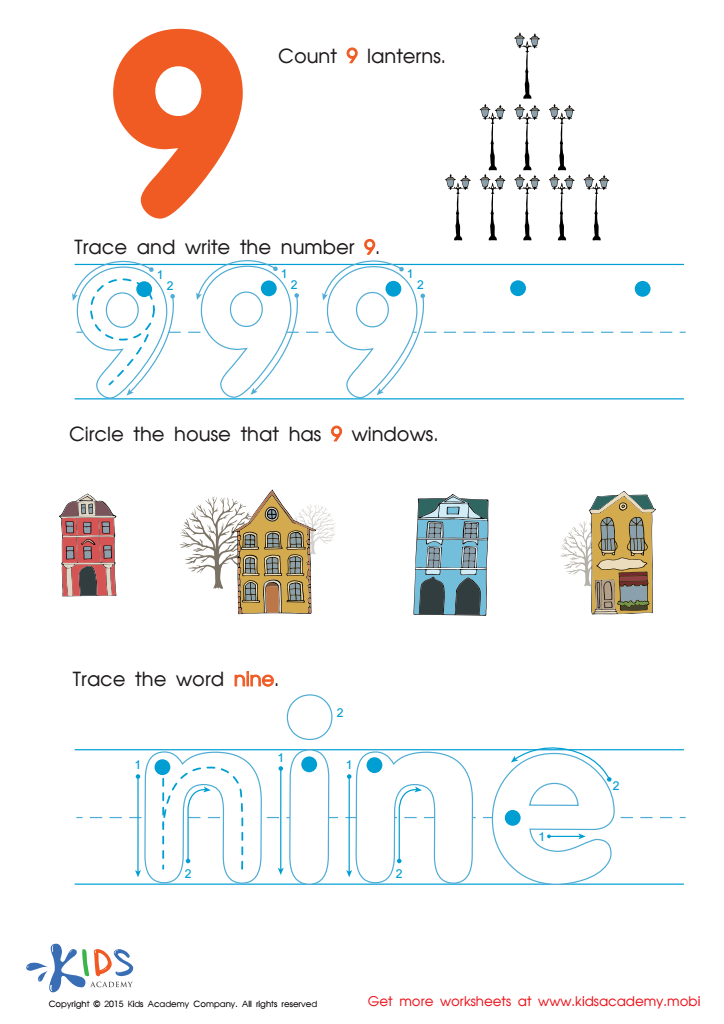

Tracing And Learning to Write Number 9 Worksheet
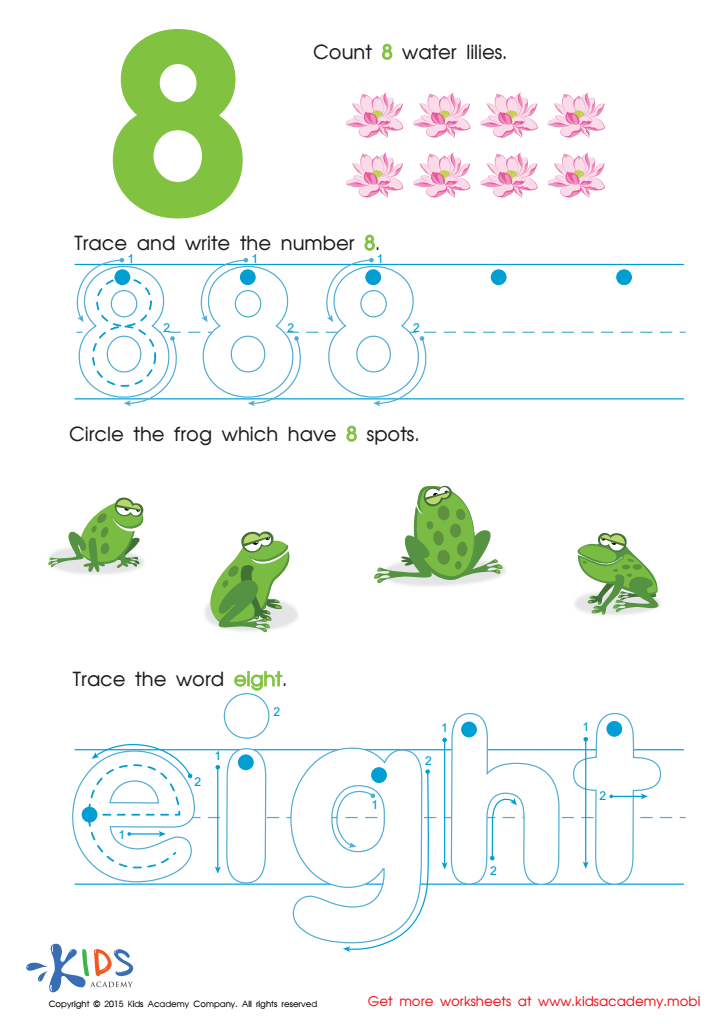

Learn Number 8 Easily Worksheet
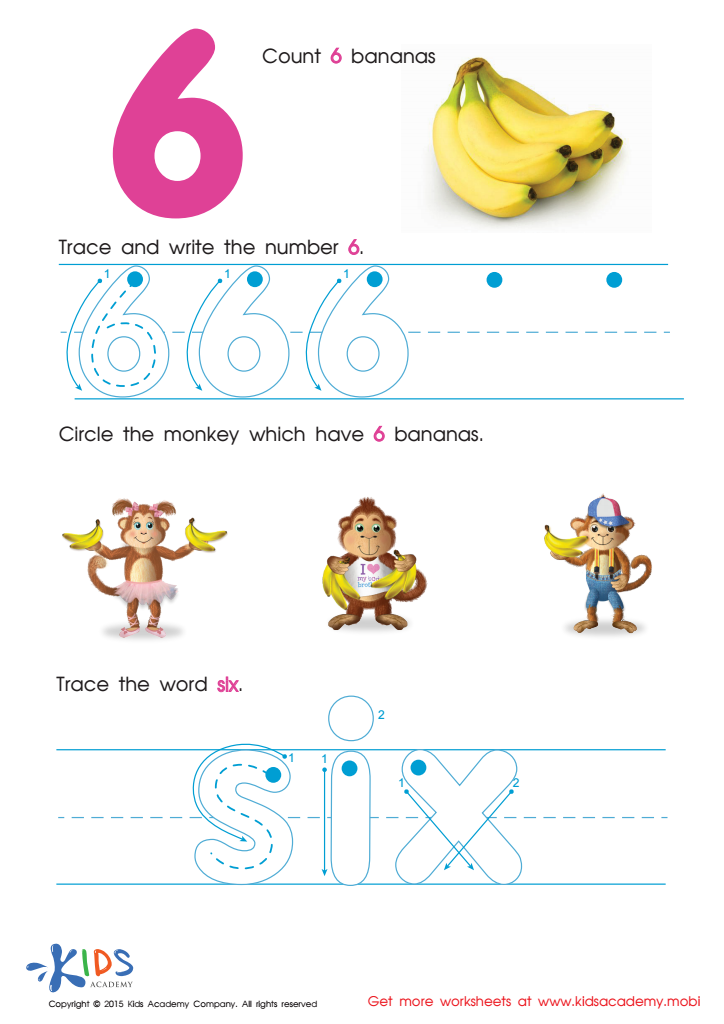

Tracing And Writing Number 6 Worksheet


Learning Number Three Worksheet
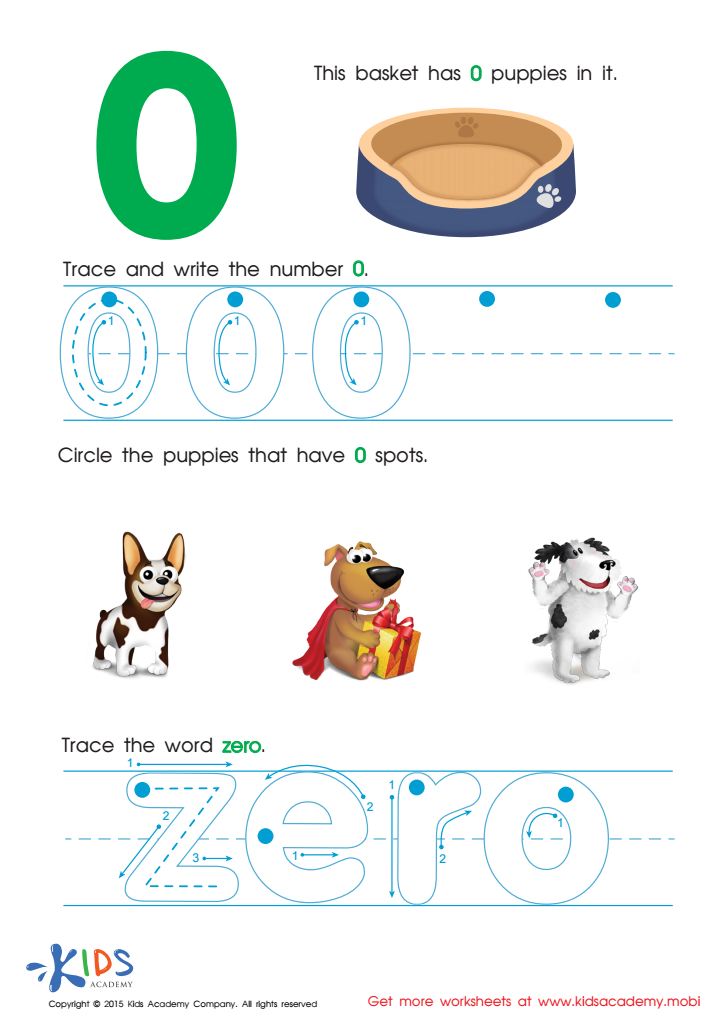

Trace And Write Number 0 Worksheet
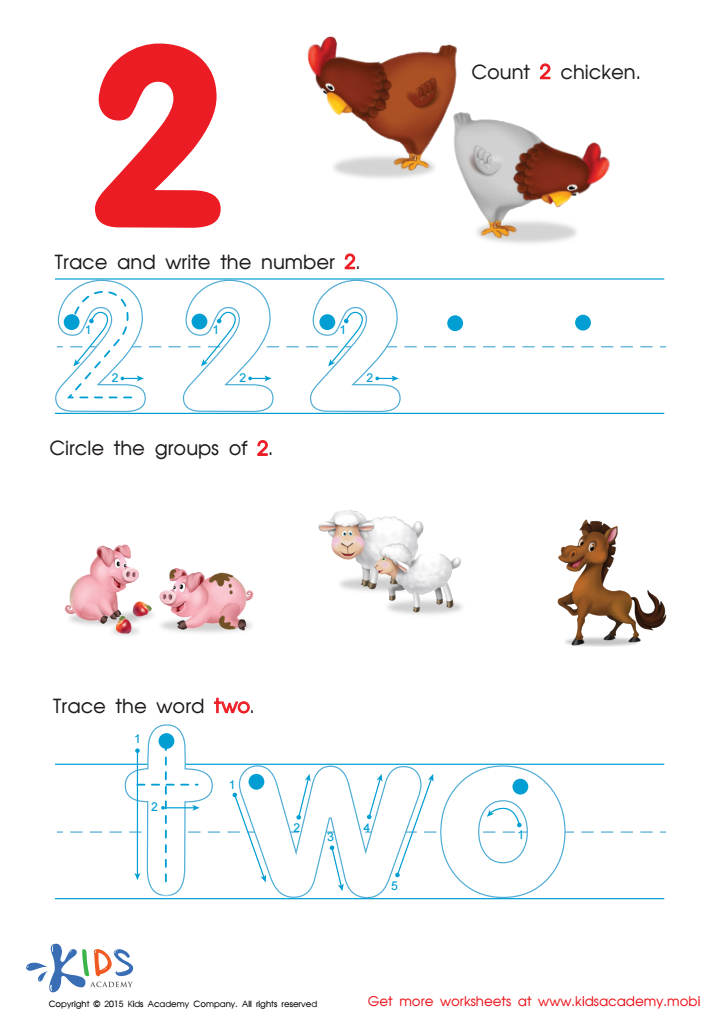

Learn to Write the Number 2 Worksheet
Normal Tracing Numbers activities for children aged 6-8 are crucial for developing foundational skills. At this age, children are beginning to refine their fine motor abilities, which are essential for writing. Engaging in tracing activities helps strengthen these skills, enabling children to gain better control over their handwriting. This not only fosters confidence in their writing abilities but also paves the way for successful spelling, reading, and mathematical tasks.
Moreover, Normal Tracing Numbers is effective in aiding number recognition and promoting early math skills. As children trace numbers, they physically engage with the shapes and structures, reinforcing their understanding and ability to reproduce these numerals independently. This hands-on approach can make learning more enjoyable, increasing motivation and engagement.
Finally, these activities provide opportunities for parents and teachers to foster a supportive learning environment, encouraging children to practice patience and perseverance. By incorporating tracing exercises into their routines, adults can help build a strong educational foundation, setting the stage for future academic success. In short, Normal Tracing Numbers activities support essential motor skills, mathematical understanding, and create meaningful engagement between children and their learning facilitators.

 Assign to My Students
Assign to My Students
